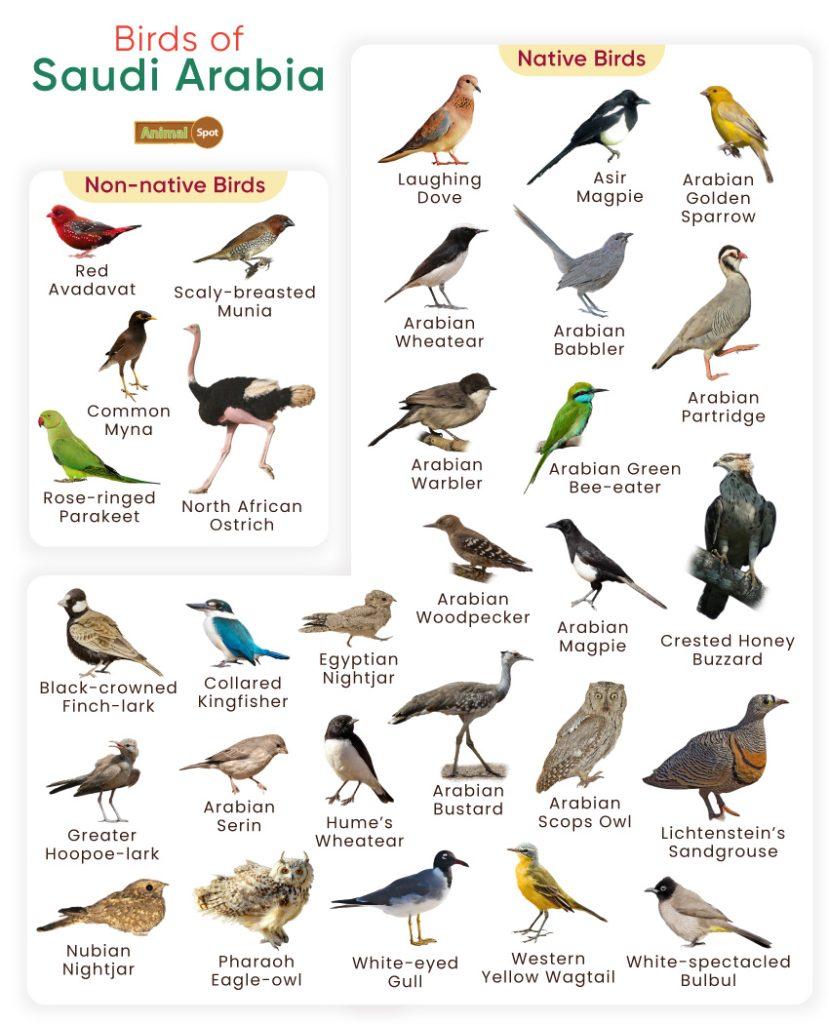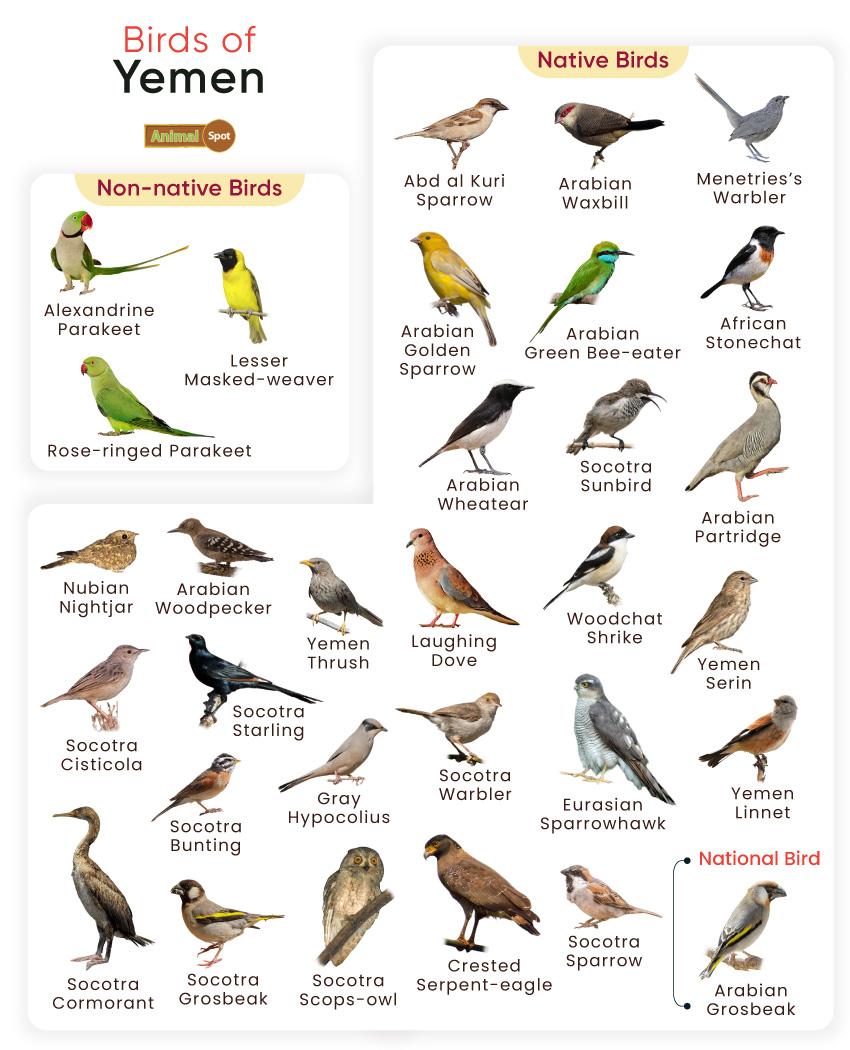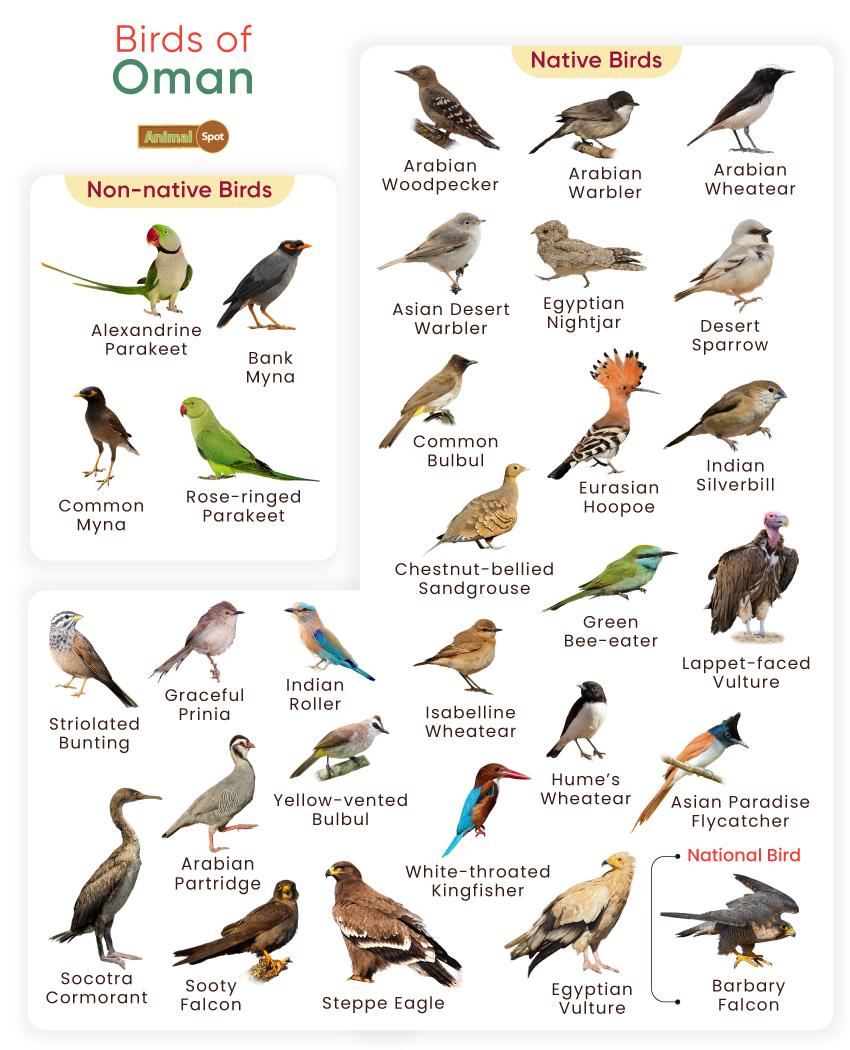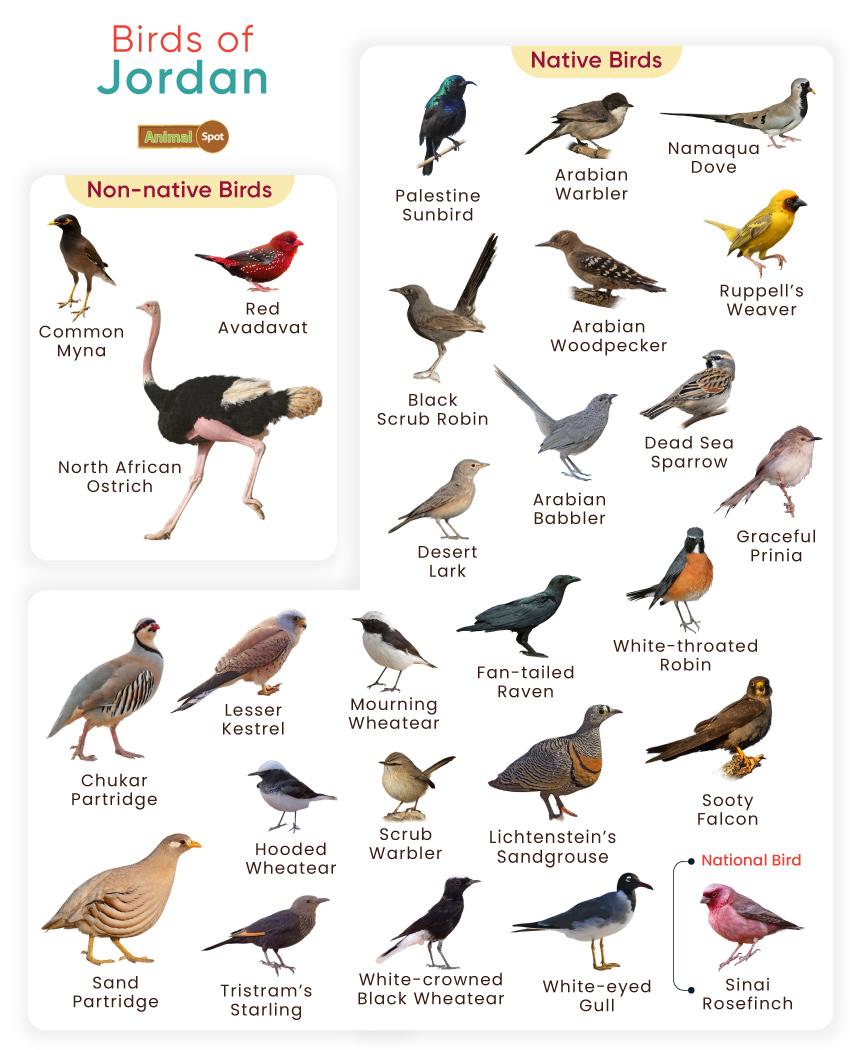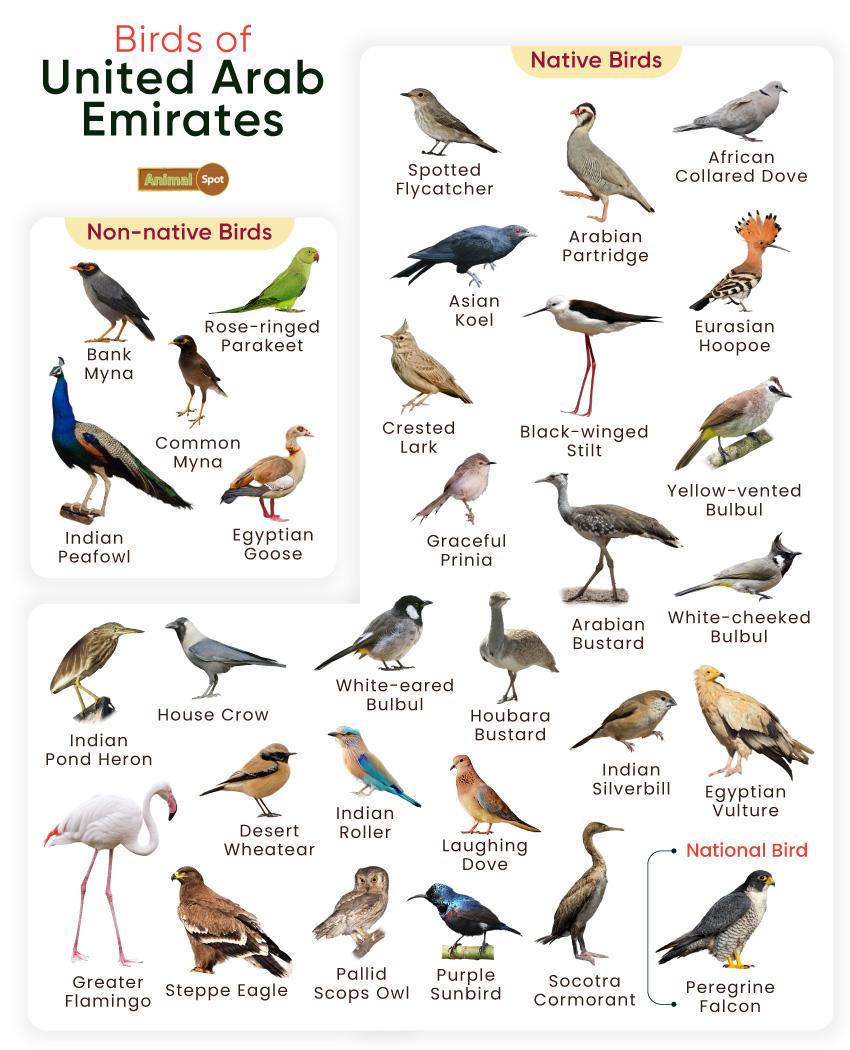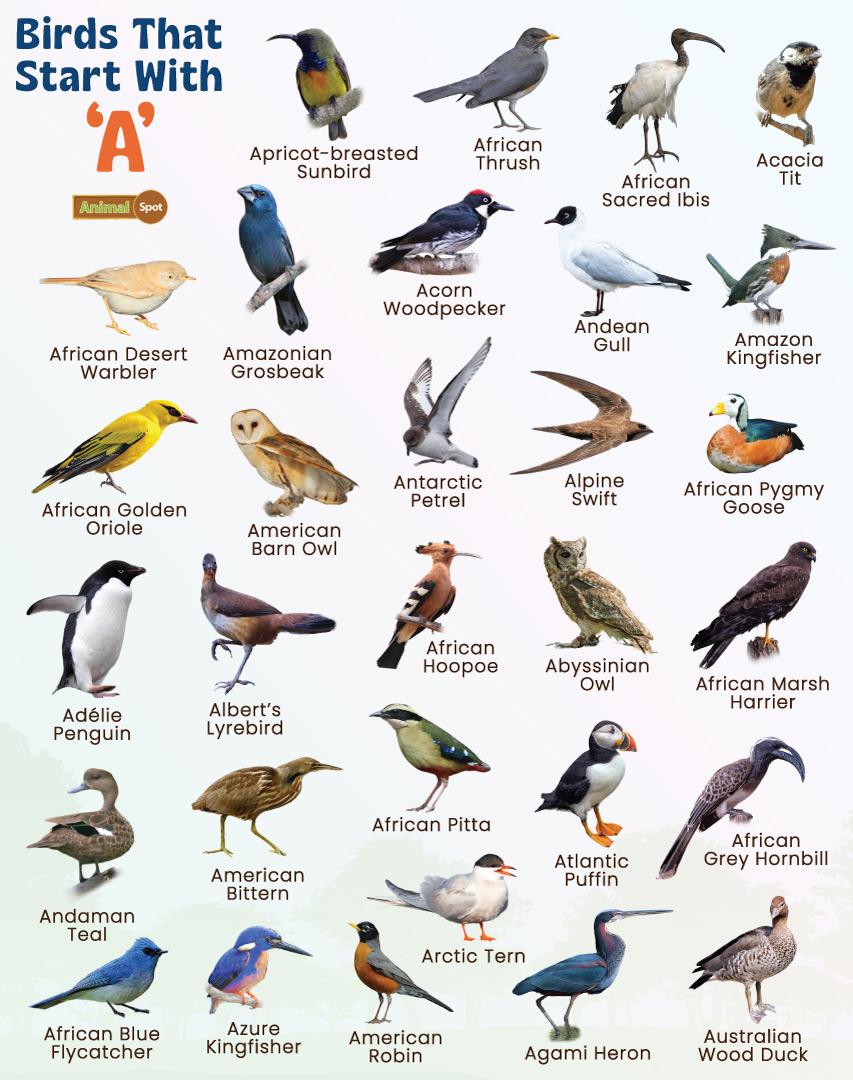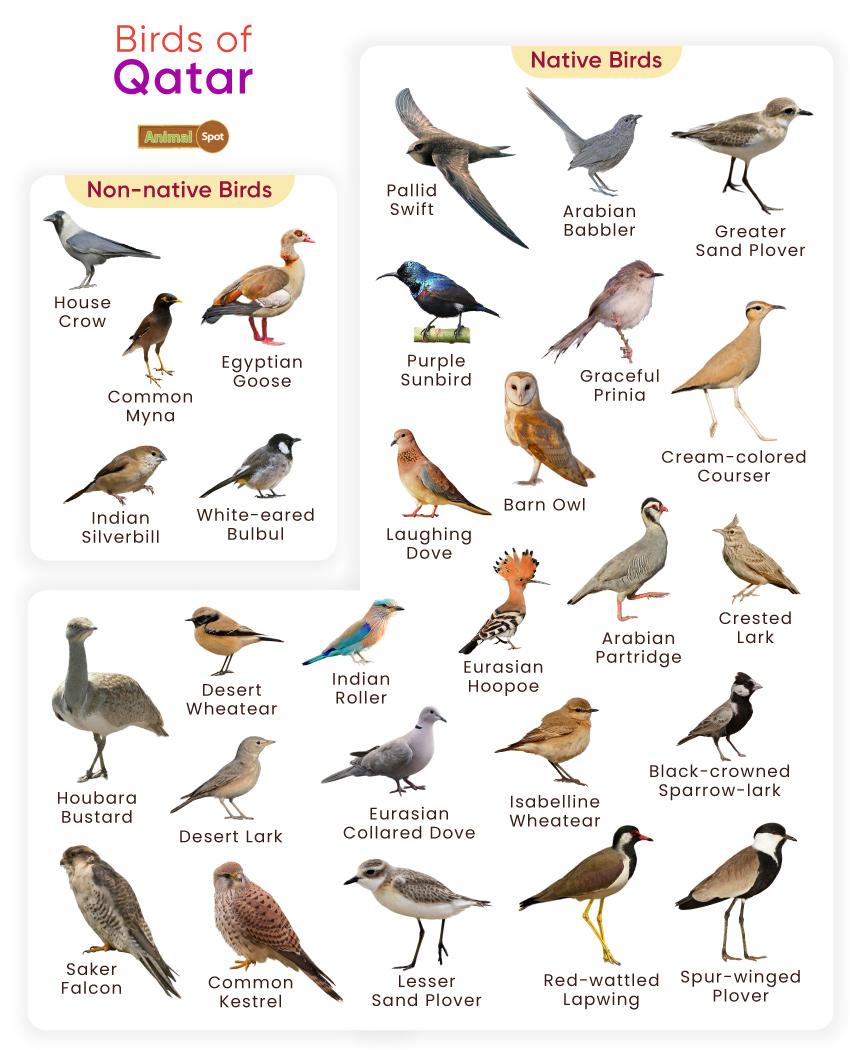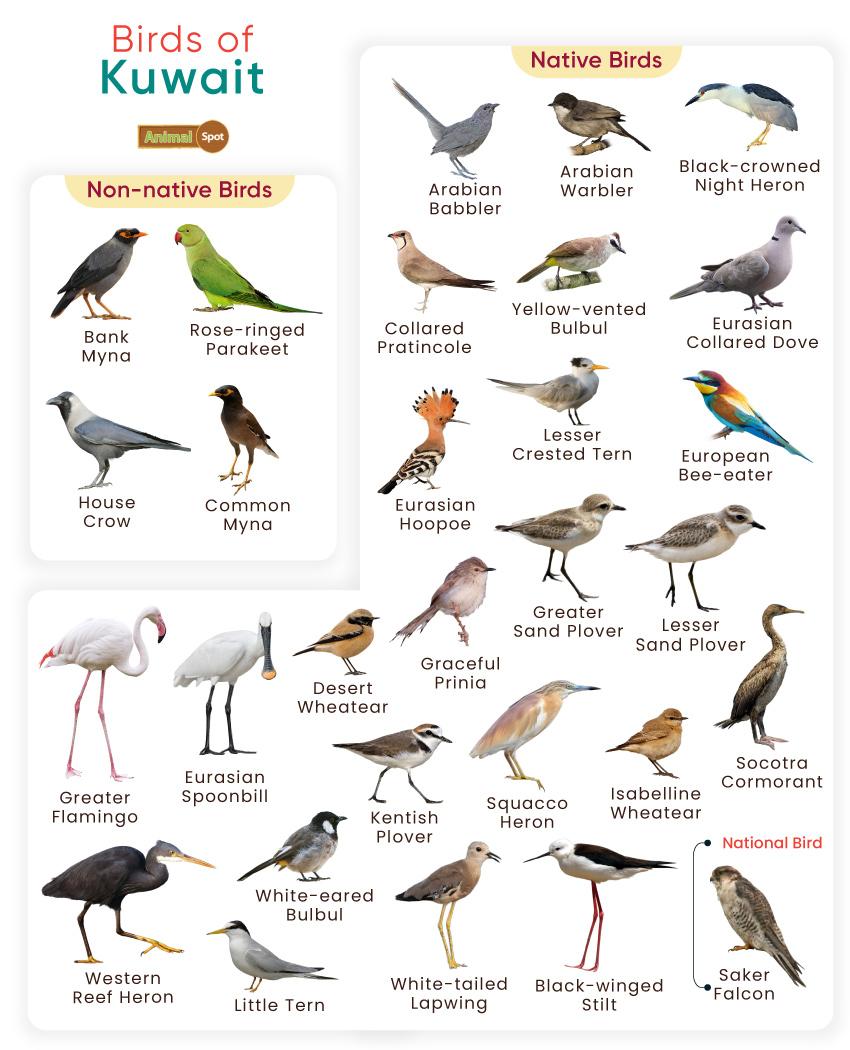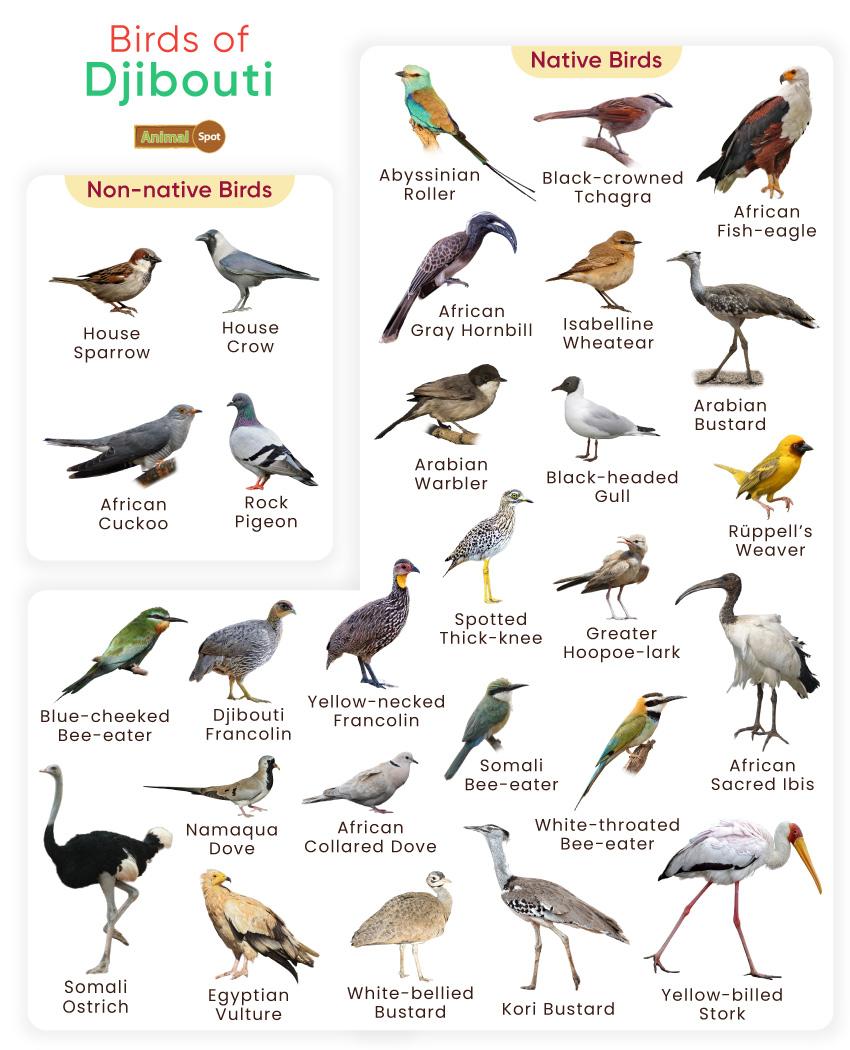Saudi Arabia is home to over 500 species of birds. The country has diverse habitats, including coastal areas, deserts, montane forests, savannas, and woodlands. This is the most likely reason behind this diversity.
Some notable avian species in Saudi Arabia include the Asir Magpie, the Arabian Babbler, and the Laughing Dove.
List of Common Birds Found in Saudi Arabia
Native Birds
- African Reed Warbler
- Arabian Babbler
- Arabian Bustard
- Arabian Golden Sparrow
- Arabian Golden-winged Grosbeak
- Arabian Green Bee-eater
- Arabian Magpie
- Arabian Nightjar
- Arabian Partridge
- Arabian Scops Owl
- Arabian Serin
- Arabian Warbler
- Arabian Waxbill
- Arabian Wheatear
- Arabian Woodpecker
- Arabian Wood Pigeon
- Arabian Yellow Wagtail
- Asir Magpie
- Barn Owl
- Barn Swallow
- Black-crowned Finch-lark
- Black-crowned Tchagra
- Black Kite
- Blackstart
- Black-winged Stilt
- Brown-necked Raven
- Buttonquail
- Caspian Tern
- Chestnut-bellied Sandgrouse
- Citrine Wagtail
- Clamorous Reed Warbler
- Collared Kingfisher
- Common Chaffinch
- Common Chiffchaff
- Common Hoopoe
- Common Kestrel
- Common Myna
- Common Pochard
- Crab-plover
- Cream-colored Courser
- Crested Honey Buzzard
- Crested Lark
- Desert Lark
- Eastern Imperial Eagle
- Egyptian Nightjar
- Eurasian Collared Dove
- Eurasian Hoopoe
- Eurasian Kestrel
- Eurasian Magpie
- Eurasian Spoonbill
- European Bee-eater
- European Roller
- European Serin
- European Turtle Dove
- Graceful Prinia
- Great Cormorant
- Greater Hoopoe-lark
- Great Reed Warbler
- Green Sandpiper
- Gray Wagtail
- Hamerkop
- House Sparrow
- Hume’s Wheatear
- Indian Nightjar
- Indian Peafowl
- Indian Roller
- Indian Silverbill
- Isabelline Wheatear
- Jouanin’s Petrel
- Laughing Dove
- Lichtenstein’s Sandgrouse
- Little Bittern
- Little Egret
- Little Grebe
- Little Green Bee-eater
- Little Owl
- Little Ringed Plover
- Long-legged Buzzard
- Mallard
- Marbled Duck
- Masked Shrike
- Monarch Flycatcher
- Montane Nightjar
- Northern Wheatear
- Nubian Nightjar
- Ortolan Bunting
- Palestine Sunbird
- Pallid Swift
- Pharaoh Eagle-owl
- Philby’s Partridge
- Pied Kingfisher
- Purple Heron
- Red-breasted Wheatear
- Red-knobbed Coot
- Red-rumped Swallow
- Red-vented Bulbul
- Red-wattled Lapwing
- Rock Martin
- Ruddy Shelduck
- Rufous-tailed Scrub Robin
- Rüppell’s Weaver
- Sand Partridge
- Sardinian Warbler
- Sociable Lapwing
- Socotra Cormorant
- Sooty Gull
- Spotted Flycatcher
- Steppe Eagle
- Syrian Serin
- Temminck’s Lark
- Thick-billed Warbler
- Tristram’s Starling
- Western Marsh Harrier
- Western Osprey
- Western Reef Heron
- Western Swamphen
- Western Yellow Wagtail
- White-cheeked Tern
- White-eared Bulbul
- White-eyed Gull
- White-spectacled Bulbul
- White-tailed Lapwing
- White-throated Kingfisher
- White Wagtail
- Yellow-wattled Lapwing
- Yemen Linnet
- Yemen Thrush
- Yemen Warbler
Non-native Birds
- Alexandrine Parakeet
- Bank Myna
- Baya Weaver
- Common Myna
- Indian Pied Starling
- North African Ostrich
- Red Avadavat
- Red-vented Bulbul
- Red-whiskered Bulbul
- Rose-ringed Parakeet
- Scaly-breasted Munia
- Streaked Weaver
Some of the best birding sites in Saudi Arabia include Jubail Marine Protected Area, Al-Ha’ir Reserve, and Asir National Park. The peak season for birdwatching in Saudi Arabia generally falls during the winter months, from November to March.
This period coincides with the migration of various bird species from Europe and Asia, making Saudi Arabia a prime destination for birdwatchers.

